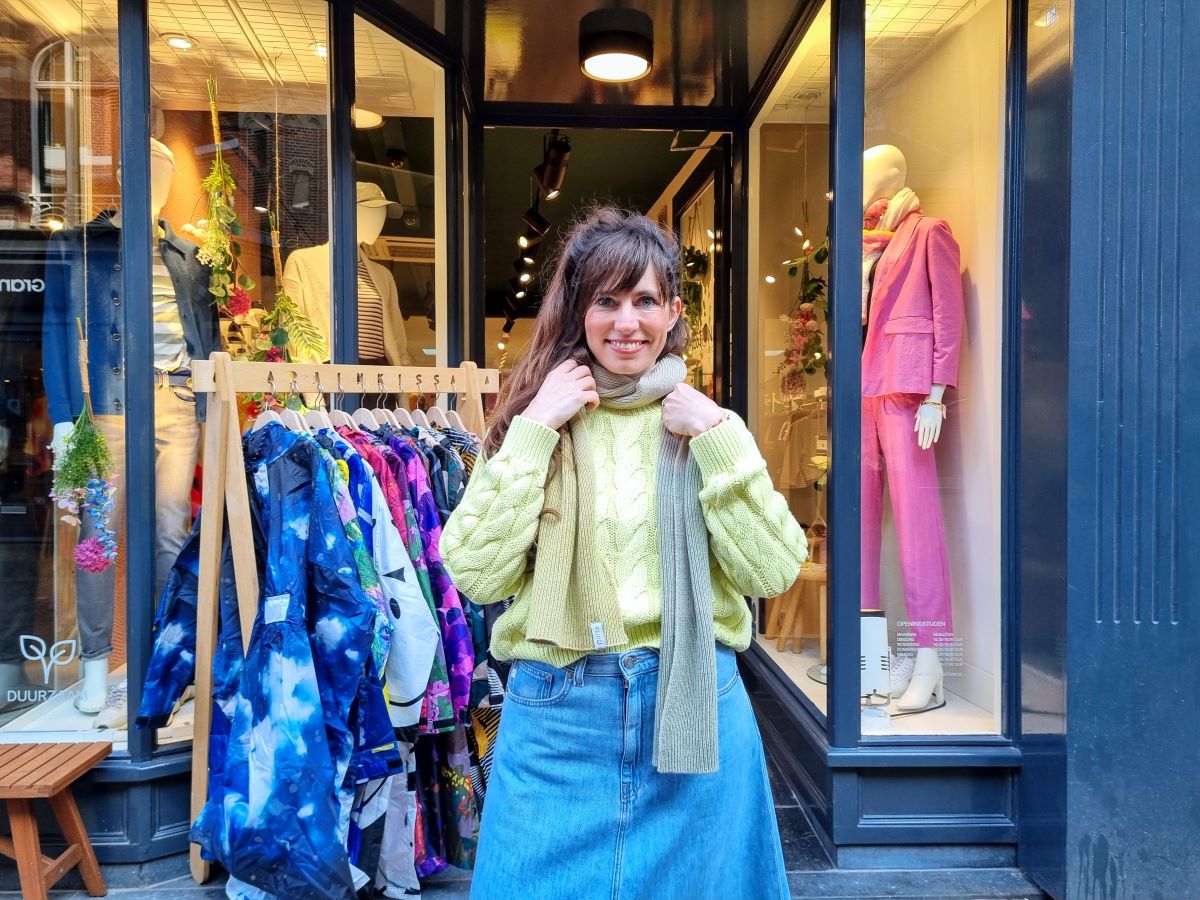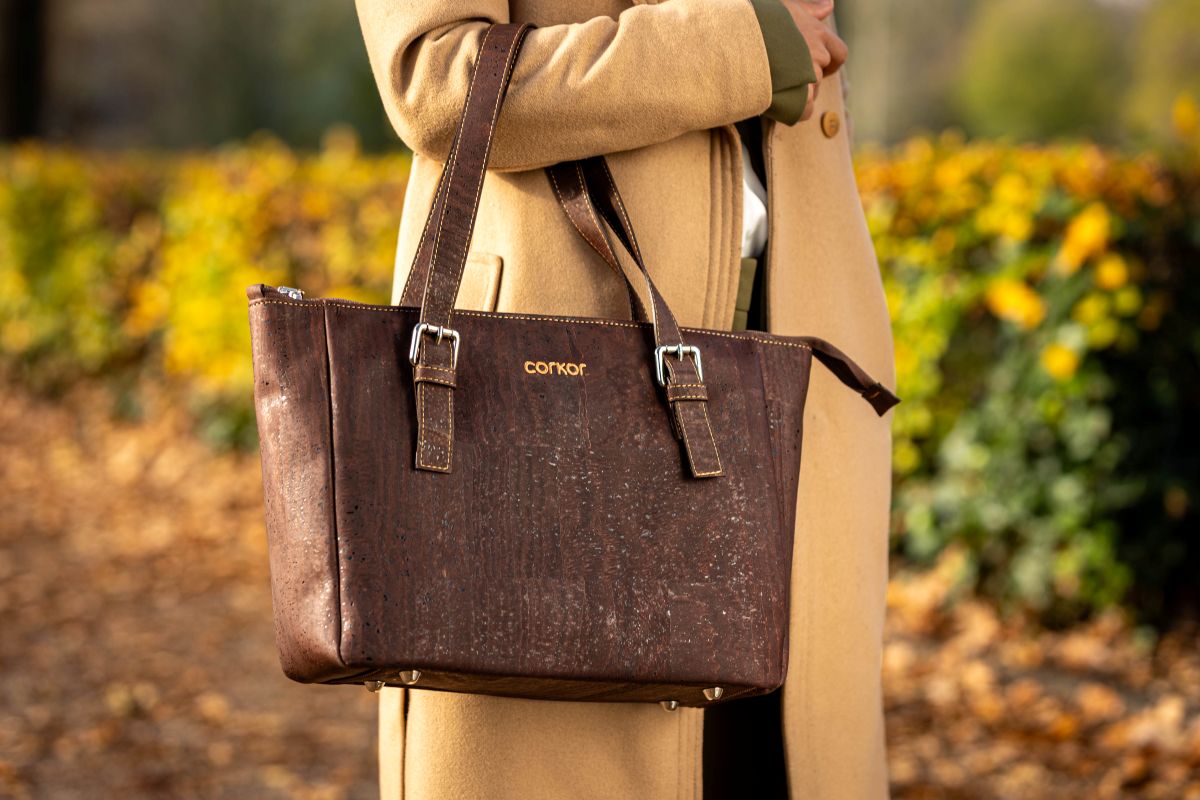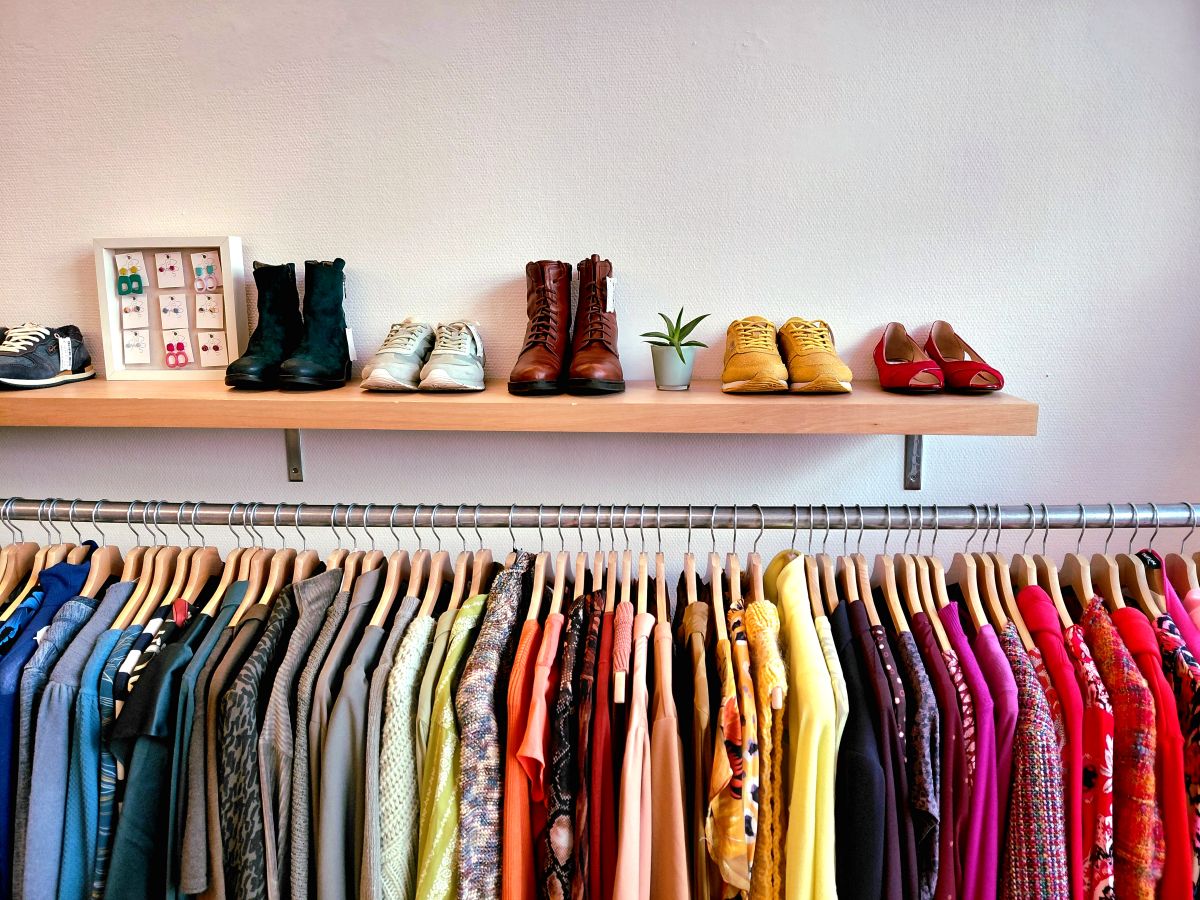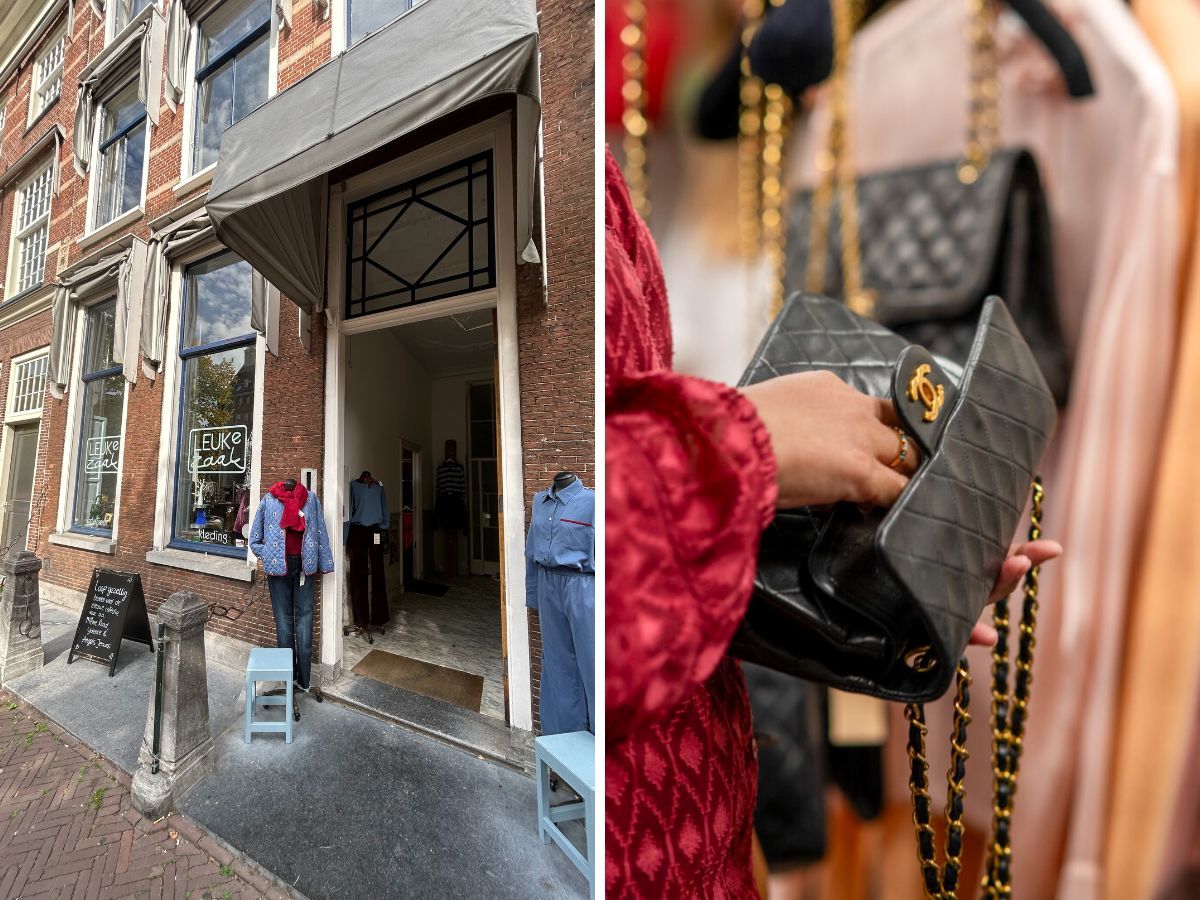Recycled clothing materials are widely advertised. Even fast fashion chains run with it. So is it sustainable? Clothing made from recycled fabrics, it sounds hopeful. But there is also a lot to worry about. After all, how sustainable is a material like recycled polyester really? And doesn't it smell a bit like greenwashing When a garment is called sustainable if only the material is ‘better’? We checked it out for you in collaboration with sustainable fashion pioneers Sophie Stone. They know all about sustainable fashion and materials.
Recycled clothing materials: we are on the right track
In collaboration with Sophie Stone
In their sustainable clothing shop on Utrechtse Steenweg, the proprietresses of Sophie Stone, Anna Sophie Slingerland and Esther Steen, regularly receive questions from customers about recycled clothing fabrics. Anna Sophie: ‘We notice that customers like to know more about it, especially about the quality and sustainability of these clothing fabrics, they have questions.’ And this is not surprising, as these materials sound hopeful, but are also all too happy to be used in ‘sustainable’ advertising campaigns by fast fashion brands that do not exactly stand for quality and sustainability. Moreover, some of the fabrics are relatively new. So what about wear and tear? Enough reasons to take a quick look at all the options with the ladies, including all the pros and cons for each clothing fabric.
Spoiler: there are big differences between garments made of the same material. It matters so much under what conditions and how the garment was made. Esther: ‘A jacket made of recycled polyester can be a wonderfully sustainable choice, but it doesn't have to be. Does it come from a workshop in Portugal or a sweatshop in Bangladesh to name just two extremes. To really appreciate a garment made of recycled materials, you have to look at more things, including the country of production and the fashion brand behind it. But nevertheless, you can certainly say something about the materials.’


At sustainable clothing shop Sophie Stone, we go through all the recycled clothing materials. The yellow cable jumper is a mix of recycled cotton and organic cotton.
This is your guide to recycled clothing materials
We sat down and listed the common recycled clothing materials for you. In this article, we are going to go through them with you step by step. They are:
- Recycled cotton
- Recycled polyester
- Recycled polyamide
- Recycled wool
- Recycled cashmere
Recycled cotton
Cotton is made from seed lint from the cotton plant, which is an intensive process. Growing cotton requires a lot from the planet (unimaginable litres of water and lots of pesticides, for example) and this makes the production of this fabric very polluting. The beauty of cotton, however, is that it is easy to recycle and that this recycled cotton fabric has the same wearing comfort. Recycled cotton comes in two forms: cotton made from old consumer clothing (post-consumer) and cotton from cutting waste created during manufacturing (pre-consumer).
Esther: ‘The first form in particular is a great alternative, because the biggest waste problem occurs at the end of a garment's life cycle: we buy too many clothes and throw away too much. Worldwide, 92 million tonnes of textile waste are produced every year. This is astronomically high. While the root of the problem is our overconsumption that will have to be addressed, it is of course a great step that we do not burn all that good cotton, but reuse it. Especially when you know how much cotton plantations demand of the earth.’
More and more fashion brands are seeing the benefits of recycled cotton and that's great. We ask the ladies for some tips. Anna Sophie: ‘Beautiful examples of recycled cotton are the jeans from MUD jeans and ARMEDANGELS and the tops of New Optimist.
So recycled cotton is a nice fabric, but there are some drawbacks. Anna Sophie: ‘Recycled cotton fibres are coarser than new cotton fibres. The fibres stick out, so to speak. Fabrics made of recycled cotton are therefore rougher and wear out faster. The industry does work on new techniques to make recycled cotton stronger, but they have not reached that point yet.’ Now you also know why your recycled cotton garment is often a mix of recycled cotton and organic cotton, which gives it a finer texture.
Recycled polyester
The second material we put on the chopping block: polyester. Polyester is a synthetic fabric made from petroleum. And therein lies the big problem: we want to get rid of the use of petroleum. It contributes to global warming. In addition, fluffy polyester fabrics - think of a scarf or a winter jumper - can release microplastics when worn and washed. And so polyester fabrics are also an environmental problem. But polyester fabrics also have some advantages and unique properties that should not be overlooked: they are very strong, elastic, waterproof, dry quickly and hardly crease at all. It is a great material for swimming costumes, sportswear, rainwear and backpacks. We really can't live without it yet.
Fortunately, there is now such a thing as recycled polyester made from old plastic, for example PET bottles. This is called rPET. The good news is that no petroleum is used to make these clothing fabrics and it reduces waste (because less plastic). But there are drawbacks, too: using recycled polyester solves the microplastic problem of that soft acrylic jumper, and you might wonder if it's smart to make garment fabrics from PET bottles. Shouldn't that bottle just stay a bottle?
Esther: ‘For everyday clothing and especially for garments that may be fluffy, we do not recommend recycled polyester. In that case, prefer to go for a natural fabric, recycled or otherwise. But for a good mackintosh, winter coat, swimming costume, backpack or sports leggings, we definitely recommend recycled polyester. There is no comparable material with the same properties and then recycled is a better alternative than newly produced from petroleum. The microplastic problem also seems to be less of a problem, as these kinds of ‘smooth’ clothing items hardly fluff at all. Clothing brands that put recycled polyester to good use are Rainkiss (rain ponchos), Aava (swimwear) and Ecoalf (trainers, bags and jackets).’



Some recycled clothing materials in a row! Left: rainponcos made from recycled polyester by Rainkiss. Middle: vegan shoes made of recycled polyester from Ecoalf. Right: MUD jeans made from recycled cotton, among other materials.
Recycled polyamide
There is quite a bit of confusion about polyester and polyamide. After all, aren't they just the same thing? Anna Sophie: ‘It is true that they are both synthetic materials made from petroleum - with the same potential microplastic problem and the same advantages (extremely strong and elastic), but they are not quite the same. Anna Sophie: ‘Polyester and polyamide look similar because they are both made from petroleum. But there are also many differences! Polyester is stronger, more wrinkle-resistant and keeps its shape better. Polyamide is more elastic, can absorb moisture better and breathes better. Tights are a typical product made of polyamide or how about the underwear you probably wear now.’
So what about the recycled variants of this fabric? ‘They too are really different. Recycled polyester, as you know by now, is made by melting and re-spinning existing plastic such as old plastic bottles, while recycled polyamide is usually made from textile waste, for example the cutting waste from other polyamide clothing or industrial fishing nets.’
Both Esther and Anna Sophie are very enthusiastic about recycled polyamide: ‘You can make beautiful mesh and lace fabrics from it that are less environmentally damaging. Producing new polyamide and polyester requires a lot of water to cool the fibres, which can be a source of environmental pollution and contamination. In addition, nylon production is a very energy-consuming process, which contributes to environmental degradation and global warming. With recycled nylon, no new material needs to be made and so there is less waste of water and energy and less CO2 emissions.’ And you don't have to worry too much about those microplastics either. Again, because polyamide is always a smooth fabric, but to be on the safe side, you can take a GuppyFriend use laundry bag for these clothes. Lovely brands to check out according to Sophie Stone: Lingerie from Underproduction, Swedish Stockings for tights and our new brand Lilja the Label for swimwear.
Recycled wool
Wool is fantastic product. Especially if you live in the cold Netherlands, it is a nice material to wear. It is the only material that really keeps you warm on a cold day. But what many people don't know is that the production of wool is often neither sustainable nor animal-friendly. Sheep farming, like cattle farming, is incredibly harmful to the planet and contributes to global warming. Sheep eat a lot. And digesting their food releases gases in their intestines. And these have to get out. And so they burp and fart a lot so sheep, like cows, also produce huge amounts of methane. Methane is a super-powerful greenhouse gas, as much as 28 times stronger than CO2. And that's not all. Sheep farming also harms the environment, for instance, the wool industry uses a lot of chemicals and is not free of animal suffering either. Ever heard of mulesing? Look that up. Or not, because it's really very sad for those sheep. Better wool does exist, but it is even better if you can make new wool from old wool. And you can!
Like cotton, recycled wool can be made in two ways: from waste during production (pre-consumer) or via collection of woollen jumpers that are no longer worn (post-consumer). In the first variant, the loose threads that fall out of the machines during production are collected and used to spin new yarn instead of being thrown away. If wool is recycled via garment collection, the garment items are separated by colour, machine-shredded into fibres from which new yarn is then spun. Anna Sophie: ‘Interesting fact about the production of recycled wool: 99% less water is consumed in production, 76% less energy and 92% less CO2 is emitted. So it is really good sustainable move to go for garments made of recycled wool. By the way, the garment will also always contain a little bit of bio-wool. This is added to make the fibre nice and strong. Cool fashion brands that use recycled wool are ARMEDANGELS, Rifo and Dedicated.’
Recycled cashmere
Cashmere is wool from the cashmere goat. Cashmere is the very softest wool there is, does not itch at all and keeps you wonderfully warm while also being breathable. The recycled variety is totally awesome as it is equally soft, airy and chic but less environmentally damaging. The ladies can hardly name a downside. Okay, maybe one: ‘wash carefully, just like regular wool.’ We can be a bit briefer about this material: the same problems as ordinary wool are involved in the production of cashmere wool. And you also have the same two options for making the recycled variety: you can make it from residual waste created during the production of other clothing pieces (pre-consumer) versus via collection of old wool garments (post-consumer). A great example of a company working with recycled cashmere is Rifo. Here's another fact about this: ‘66% less water is consumed, 67% less energy and 85% less CO2 is emitted when making an item from recycled cashmere wool versus new wool.’
Sophie Stone, a sustainable fashion shop for everyone
Sophie Stone is a sustainable and fair webshop and fashion shop in a beautiful location in the heart of Utrecht (Steenweg 11). Their mission is that everyone can shop clothes carefree, that you don't have to think about under what conditions and how the clothes were made. With a wide collection of mainly European fashion brands, they try to make sustainable fashion accessible to everyone, whatever your style. Will you come and visit sometime? Anna Sophie and Esther would love that!
Want to know more or shop online? Check sophiestone.nl (With the code GREENLIST10, you get 10% discount on your first order, also usable in-store if you mention it at checkout).
More sustainable tips from thegreenlist.nl
- We previously interviewed Esther from Sophie Stone about sustainable fashion. Read the interview here!
- Want to know more about sustainable clothing materials? We got into this too!
- At Sophie Stone, you can also shop a Sustainable Fashion Gift Card. Learn all about this beautiful and useful gift card!
Sources: recovo.co, rifo-lab.com. Photo credits: thegreenlist.nl.












